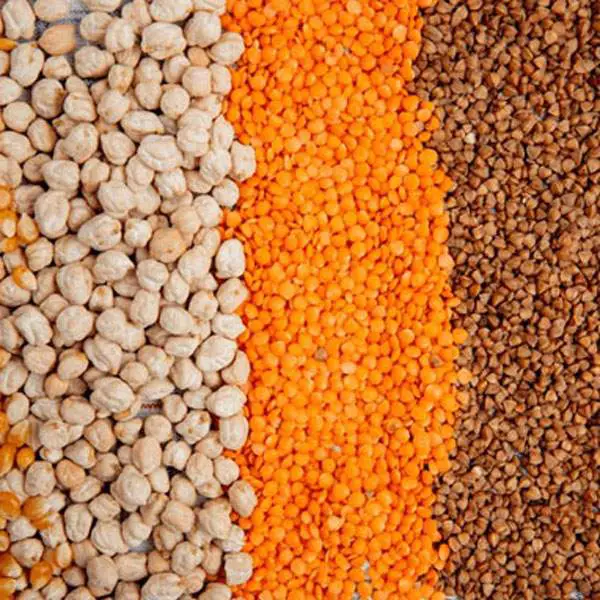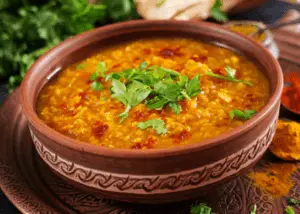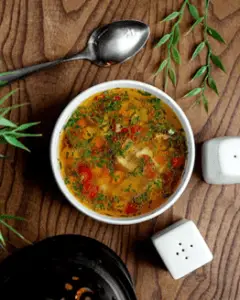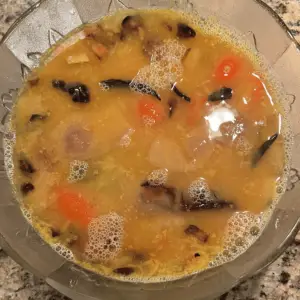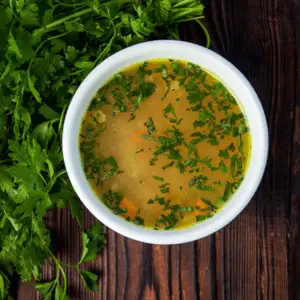Lentils/Dal: A Simple Bengali Comfort Food
A few days ago, I was reminiscing about my mom’s special dal for lunch. It was often served with steaming hot basmati rice. Whenever I poured a spoonful of the golden yellow dal over the rice, the rich hues of the dal would spread across the rice, making the dish even more appetizing. A squeeze of lemon (lebu) over the dal would fill the air with its tangy, zesty aroma-intertwining the flavors and making the tastebuds have a dynamic experience.
Lentils, commonly known as ‘Dal’, is a dish usually found on every dinner table in Bangladesh. Now that I come to think about it-every household has its own ‘Special Dal’ recipe where the dish speaks of the tradition that has been passed on from generation to generation.
And now that I think of it, lentil is a very versatile dish. One can make so many dishes with it thanks to the variety of lentils. The most commonly used lentils in Bangladesh are:
Moong dal or green gram dal is a type of lentil that can be used for making various dishes. The dal has a soft, creamy texture when cooked and has a mild, sweet flavor to it.
I wanted to try something new with moong dal, so I thought of making Cauliflower Moong Lentil Curry. A popular dish in Bangladesh that is high in protein and fiber. I ordered the Tata Sampann Indian Pulses moong dal from Amazon. There were other brands too, but this one caught my eye as it was ‘highly rated’ by customers.
The dish took me around 45-50 minutes to make and it turned out to be delicious! Easy to cook, highly nutritious, and an overall satisfying dish. A must-try if you are looking for a healthy dish to add to your meals!
A tip-when you are buying lentils, the quality of them matters a lot when you are cooking. If the quality of the lentil is good, then your cooking time will be average. If not, it will take you a pretty long time! Thankfully, I could see the reviews and buy the moong dal. This is why I prefer buying them online, as I take my time to review the products and purchase them.
Another dish that is typically found in Bengali homes is Murighonto (Fish head with moong dal). The dish is made from fish heads, moong dal, and various types of spices. It is usually a rich and flavorful dish on which you and your families can feast!
Masoor dal or red lentils is another lentil that is commonly used in Bangladesh. It is high in protein and is essential in building and repairing ti
ssues, promotes bowel regularity, and is beneficial for heart health.
In a Bangladeshi household, you will definitely find Instant Pot Dal served with warm rice. A portion of comfort food to many of us. When I first moved to the U.S., this was and still is my go-to food!
I usually get the Aviva Masoor Dal as it is high in quality, non-GMO, and fresh as only small amounts are sourced directly from the producer.
You can try the Vegetable Khichuri with it and let us know how it turned out to be!
Chholar dal/chana dal is commonly used in Bangladeshi cuisine, including breakfast dishes. The savory-sweet, warm, nutty dal gives a velvety and smooth feel to the taste buds when you have it with crispy, hot porothas. It is a simple yet soulful dish that you can have for breakfast, lunch, or dinner!
There are many brands online, but if I have to go by the ratings, then Rani Chana Dal. should be bought! I was looking up the reviews and found out that the brand ‘Rani’ is from India. So, if you are looking for Indian brands and the Indian grocery store is a bit far from your home-then you know where to order from!
Toor Dal or pigeon pea lentil is not as popular as the other lentils/dals mentioned above.
However, it is at times used as a substitute for moong and masoor dal.
Indians, on the other hand, consume Toor dal daily. The other day, I went to my friend’s house and I saw her making the dal (I knew it was Toor dal as I saw the packet in the kitchen). Later on, when I asked her why they usually have Toor dal more than the other ones, I found out that it may help to avoid Type 2 diabetes. The dal helps to lower blood sugar and cholesterol. So, they prefer to consume it on a daily basis. It is basically known as a healing soup for diabetic and cholesterol patients!
The taste of the dal is a bit distinctive. It is somewhat bitter and sweet at the same time. I guess the taste is influenced by the cooking style.
Overall, the dal has a balanced flavor when you eat it with rice or roti.
I remember when my sister was pregnant, my mother used to make her have Urad dal. This dal is beneficial for pregnant women as it contains omega-3 and omega-6 fatty acids. It helps to strengthen the bone, reduces constipation and diarrhea, and gives energy. No wonder my sister had it daily! She usually had it with plain, warm rice or roti.
The dal has both bold and subtle flavors-which makes the taste buds crave more in each and every bite! It is first gently tossed in the frying pan, releasing an aromatic smell of spices in the air. As you hear the dal crackle and pop- the wait for the dish to get cooked quickly gets irresistible!
These were a few of the days that are usually found at Bengali homes. But don’t you think that dal is just more than a dish? Any dish related to lentils/dals or just lentil curry has robust memories associated with it. Dal bhorta, for instance, holds the memory of my nanu. Every Friday, my nanu used to make an array of shorts-dal shorts being one of them. I used to sit next to her on a plastic tool and observe her grind the spices and herbs and cook the dal until the consistency was perfect. The vibrant yellow color of the shorts with red chilies popping out from the sides was a treat to the eyes!
Another favorite dish is Bhuna Khichuri. I am sure it’s a staple for every household on rainy days! The dish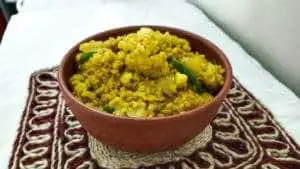 is healthy and easy to cook. My favorite side dish with bhuna khichuri is dim bhaja! A portion of wholesome food that you can never get bored of!
is healthy and easy to cook. My favorite side dish with bhuna khichuri is dim bhaja! A portion of wholesome food that you can never get bored of!
You see, in a world where we feast upon the rich delicacies of Bengali cuisine, lentils/dals remind us of the humble and simple side of life. The dishes remind us that there is warmth in the simple things in life and, no matter what, we are always looking for comfort in little things.

